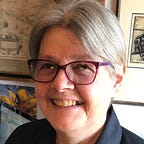Key developments of 1550
Published in
3 min readJan 30, 2021
The year 1550 CE saw several world-historical things happening around the world. Before we dive deeper into one of these, here are the main bullet-points:
- Conquistadores doing their aggressive, expansionist thing in various parts of the Americas. Notably at Penco (halfway down today’s Chile) one conquistador force vanquished an army of several thousand indigenous Mapuche fighters. “The battlefield was littered with discarded weapons, 300 dead Indians killed in the clash with Ainavillo alone, according to Vivar, 4,000 was the total Mapuche loss after the pursuit, according to Lobera, and 200 were captured including many leaders of the army. Valdivia had the nose and one hand of each of the prisoners cut off and sent them back with a message that the Mapuche should now submit to Spanish rule. Soon afterward the Mapuche leaders came to submit to the Spanish.” Also, the founding of new settler-cities in Colombia and Mexico…
- In March, England and France signed the Treaty of Boulogne, by which England withdrew from Boulogne in France and returned territorial gains in Scotland.
- In April, a significant (and possibly public?) debate got underway in Valladolid, the capital of the Castilian lords. it pitted Friar Bartolomé de las Casas, whom we met in 1542 when he’d persuaded King/Emperor Charles to try to reduce the violence of the conquista in the Americas, and Juan Ginés de Sepúlveda, a supporter of the forced conversion of the indigenes who was also described by English-WP as “a humanist scholar” (?). The Valladolid Debate had been ordered by King/Emperor Charles, who nominated its “jury” of eminent doctors and theologians, “to hear both sides and to issue a ruling on the controversy.” The Debate lasted around a year and had very mixed, or negligible, impact on Spanish colonial practices (see here.) I have this image of King/Emperor Charles, rushing to and fro in pursuit of the many duties he’d taken on related to the governance of the various parts of Europe over which he ruled, and possibly being quite impatient with the courtiers, priests, or others who said “Hey, you really need to pay some attention to what the conquistadores are doing over there in the ‘Indies’,” as they called them then. So he fobbed those petitioners by saying, “Oh I’ll set up a commission to look into it”… Though the Valladolid Debate may not have made much immediate impact, the topics debated lay at the core of the imperial project various Western leaders pursued then and continued to pursue- often with great violence- over the following 400 years.
- In July, chocolate was introduced into Europe, from Mesoamerica where it had had a very long history, including for ritual purposes. The description of chocolate’s history in English-WP is pretty interesting. In the first instance, in Europe as in Mesoamerica, chocolate was taken as a drink. (I sit here eating some chocolate snack, drinking tea sweetened with sugar, and realize how the addition of these materials as such addictive staples to the European-origined diet was all due to various conquistas, encomiendas, and forms of chattel slavery. Sigh.)
- Also in July, the Jesuit order got approved by the new pope, Julius III. Jesuits came to act as Catholic “shock troops” in the imperial projects of many European Catholic leaders. They also fostered learning- especially of the ethnographic kind that could help their earthly sponsors control the subject populations more effectively.
- 1550 was the year in which the the Tümed Mongol leader Altan Khan, whom we first met in 1544, besieged Beijing and burned some of its suburbs. The Ming administration still also continued to be bothered by pirates along the Zhejiang coast…
Originally published at https://justworldnews.org.
